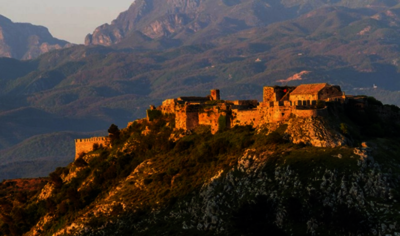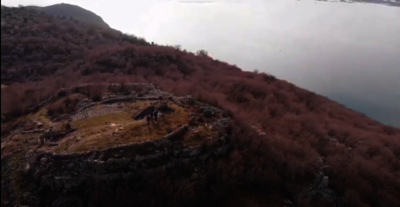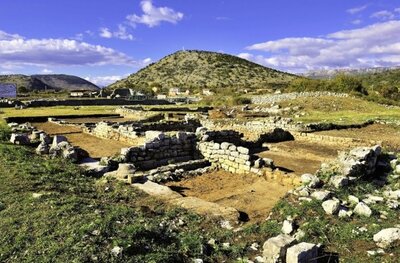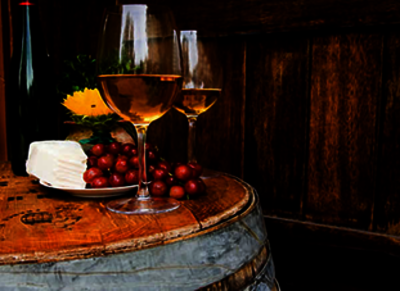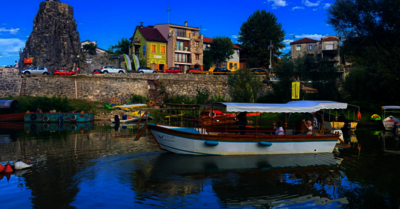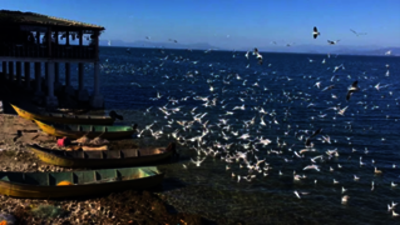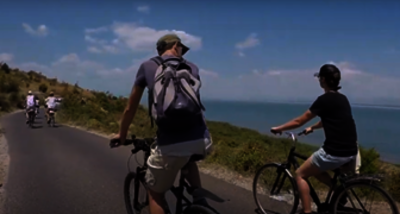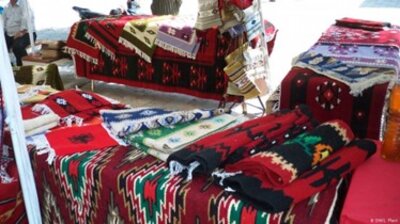Round Trip around Shkodra Lake (Albania & Montenegro)
The Shkoder Lake basin harbors a rich cultural and historical heritage of different epochs and forms. Traces of the first human communities appeared way back in the Paleolithic period, while archaeological founds from a cave on the Shkoder Lake coast imply on the first traces of spiritual life from the Neolithic period. Numerous civilizations have come to this region one after the other and left their traces – Illyrian, Hellenic, Roman. An extraordinary number of archaeological sites, fortresses, monastery complexes, authentic architectural craftworks, are located on the shores and in the islands of the Shkoder Lake, dating from various epochs that followed one another in this region. In the following itinerary, we will try explain historical context in which those processes were developed and look back to cultural contents that formed wealth and diversity of cultural layers of the Shkoder Lake.
DAY 1 Shkoder Castle – Hellenistic fortification of Mokset hill – Koplik
Shkoder: Set on the banks of a sparkling lake at the foot of the wild and rugged mountains of High Albania, Shkodra, was once the largest and most flourishing town in the country. Its mighty fortress, Rozafa, still rises proudly over the Drin and Buna Rivers as a symbol of Shkodra's will to survive. Shkodra’s turbulent 2400-year history has left plenty of interesting relics that make a visit worthwhile. The oldest wall of the Shkodër castle dates from the first millennium bc. The last Illyrian king Gentius was defeated here by the Romans in 168 bc.
After the visits of the castle and the musem, continue toward the area of Koplik. Lunch in Agritourism Kantina Kopliku. After lunch hike over the Mokset hill to visit the Hellenistic fortifications that serves to control the lake and the fertile plains around it.
Mokseti Fortification is located in the top of a hill with a height of 252 m,. From here can be viewed the Castle of Samobor (Montenegro) which is located only a few hundred meters away on the opposite side of Lake, in Hoti region, and many of fortified settlements and castles in the area of Mbishkodra, such as the Castle of Hoti and the Castle of Marshej. Further east and south-east the view can be extended to Podgora Castle, Balilajve Prison, Kratul Castle and Shkodra Castle, which closes the Lake on the south side.
After the visits check in the local guesthouse. Dinner and overnight.
DAY 2 Koplik – Doklea Roman site - Virpazar
After the breakfast continue toward the border with Montenegro. After border Crossing procedure head toward the ruins of the ancient town of Doclea.
Roman town Doclea is the most significant ancient locality in Montenegro, situated on the wide flat plateau between the rivers Zeta, Moraca and Siralija Creek. Doclea was named after the Illyrian tribe Docleati on which territory it was built. It had significant role in this period, but it was mentioned relatively late in the historical sources. Ptolomey mentioned Doclea for the first time (Δόϰλϵα). During the Roman period, Doclea was the most significant urban center in the area of Montenegro which we know today, situated near the crossroad of several main roads that led to Shkodra.
After the visits of the roman ruins, visit the archaeological Museum of Podgorica and continue toward one of the local wineries for lunch and wine tasting.
The favorable climatic and geographical conditions in the surroundings of Shkoder Lake, within close distance to Adriatic coast, give to the grapes everything they need to be perfect for a wine producing. Between the red and white grape varieties, reds are dominant with more than two halves of all grapevines in Albania and Montenegro. The most common autochthonous varieties are “Kallmet”, “Shesh i zi” and “Vranac” used for the red wine, and “Krsta” “Shesh i bardhe” and “Debine” used for the white wine. During the last decade, many families started to produce the wine from its own vineyards, offering variety of tastes and aromas to the lovers of this divine drink.
After the lunch and wine tasting in the winery, continue toward the medieval fisherman’s village of Vir Pazar. Check in local guesthouse and lunch in a traditional tavern next to the lake.
DAY 3 Virpazar - Zogaj
After breakfast we start visiting the Natural Park visitor office in Virpazar where we are going to more about the flora and fauna of the lake and from here we will join a cruise in the Shkoder Lake with the possibility of birdwatching.
Virpazar is also a famous vacation area, and in the past it was a transitory station for the cruise over Shkoder Lake. Numerous canoes, barges and bigger taxi boats, which usually transport tourists who wish to see the beauties of Skadar Lake, stand tied to the shore, Shkoder Lake today is the biggest settlement of pelicans in Europe. There 12 kinds of snipes, 3 kinds of ducks and 160 more of other kind of birds. Among the bird inhabitants in the region of the Shkoder Lake we have: cormorants, gulls, different kinds of ducks, gooses, and pheasant. Often you can see storks, herons (white, yellow and gray), grebes and other kinds of birds, which are rare in world, are often found here.
After this visit we will continue our tour driving along the road that goes by the lake crossing into the Albanian border when we are going for lunch at Shega Agritourism. After lunch we will continue by the lake again through the Shiroke - Zogaj area that is considered the richest are for birdwatching.
Over 70 percent of Albania’s bird population is found in Shiroke-Zogaj Lake area. Their number increases during autumn, which is the perfect time for birdwatchers to enjoy the water birds spectacle. A breeding colony of the Dalmatian Pelican lives in this lake. Wetland species that live in the area include owls, ducks, geese, gulls, birds of prey, waders, and passerines.
Shiroka, Zogaj, Bregu i Ranes, Bishtiqendia, Shegan, Grili, and Sterbeqi are considered as areas with rare values.
After this we will accommodate our tourist at a local guest house.
DAY 4 Zogaj – Shiroke Bike tour – King Zog villa – Carpet shop
After the breakfast, a pleasant bike ride along the shores of Shkodra Lake offers the best views of the lake.
The ride goes along the south shore of the lake below Mount Tarabosh. In Shiroka we will pass the remains of the lake-side villa of King Zog, the last King of of Albania in the 1930s. Then we will continue on to the isolated fishing village of Zogaj. During communism this village was in the no-man's land between Albania and Yugoslavia. In Zogaj you will have the opportunity to meet a local carpet weaver and get to sneak a peek at how traditional
Albanian carpets are made. The cycling will be about 15 km (round trip) along a smooth, level, and recently paved road. We will make several stops along the way for birdwatching possibility and if weather permits a refreshing swim in the lake.

